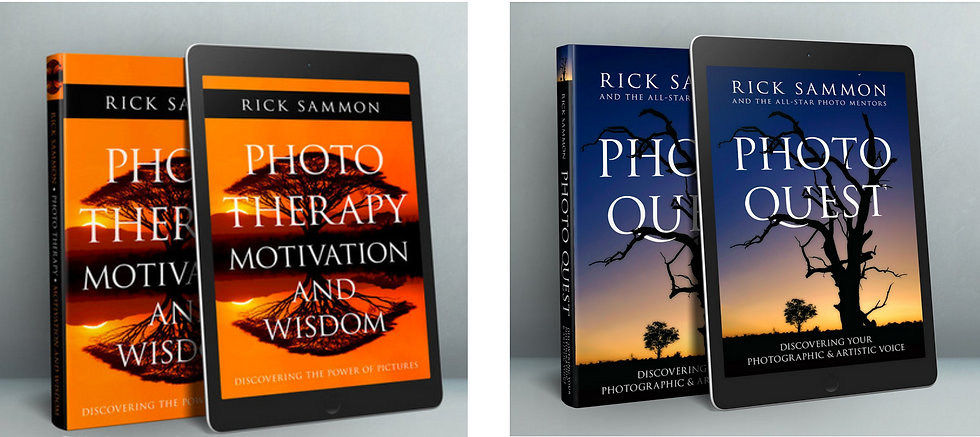Sony's FE 200-600mm f/5.6–6.3 G OSS lens in action
- Rick Sammon
- Feb 23, 2023
- 4 min read
This is a "general impressions" review of the Sony FE 200–600mm f/5.6–6.3 G OSS lens for ful-frame Sony mirrorless cameras. In this review, pro photographer Rick Sammon offers his assessment of the Sony 200-600mm lens for wildlife photography.

This past January, I returned to two of my favorite bird photography location in the United States: Wakokahatchee Wetlands and Green Cay Nature Center and Wetlands, both of which are close to Delray Beach, Florida. On this trip, I was photographing with my Sony a1 camera and Sony FE 200-600mm f/5.6–6.3 G OSS lens – now my go-to gear for all my wildlife photography.
Birds in flight photography challenges
While visiting these locations, I was interested in getting photos of birds in flight, which can be some of the hardest subjects to photograph, for five main reasons:
Birds are often zigzagging in different directions, so getting a sharp, in-focus shot is a challenge.
The background is constantly changing: from light to dark, dark to light, from busy to plain and from plain to busy. Those changes are important, because the background can make or break a shot.
The lighting can change in the blink of an eye, sometimes darkening the bird's eye (which should be well-light in most cases).
Capturing a good gesture, perhaps wings up or wing down, is important for an image with impact.
Getting a good exposure of a bird with white feathers against a dark background can also be a challenge, due to the contrast and brightness range in the scene.
I was really interested in seeing how the Sony a1 paired with the 200-600mm lens would perform in such circumstances.

About the Sony 200-600mm f/5.6–6.3 G OSS lens
Sony's versatile 200-600mm lens played a key role in my successful photo sessions (three, one hour visits to each location). Those photo sessions resulted in a higher number of "keepers" than during my previous visits over the past 10 years. In the past, I used a 100-500mm lens for my bird photography, sometimes with a 1.4x extender. The Sony 200-600mm lens eliminated the need for me to use an extender, which cuts down on light entering the lens, resulting in the need to boost the ISO to maintain a shutter speed or aperture.
I found the lens to be super sharp throughout the zoom range, thanks in part to the lens’ OSS (Optical Steady Shot). I also found the three OSS settings beneficial for photographing birds in flight. They are:
1 - For reducing normal camera shake.
2 - For panning.
3 - For zigzagging subjects.
And man oh man, is that lens smooth when you zoom in and out on a subject!

Above: Understanding and observing subject behavior is important in bird (and in all wildlife) photography. I observed this white ibis darting around and feeding for about 15 minutes before I captured this image. To capture the subtle differences in the position of the bird’s wings (gesture) as it moved, I set my camera to the H+ (highest) frame rate.

Above: Talk about a challenge, actually several challenges in one! Seemingly out of nowhere, this great blue heron gracefully flew past me. Because I had the camera's AF Mode set to Tracking Expanded Spot, the Subject Selection set to Bird (Human and Animal are other choices), and the Exposure Compensation set to EV-1 (because I had been photographing white birds against a dark background), I was able to raise my camera and basically point and shoot. So yes, it’s a lucky shot, but luck does favor the prepared photographer.

Above: For my action shots, I set my shutter speed to at least 1/1000th of a second to “freeze” the action. I also choose a wide aperture, usually f/7.1, to put the background out of focus. That out-of-focus background is especially important when the bird is positioned against a very busy background, as shown here.

Above: I took all my photographs with the file format set to Uncompressed Raw - so I had the highest quality file. Yes, those large files take up a lot of space on my memory cards, and take some time to download, but with all mega data, I could do a mega crop and still get a high-quality image.

Above: Here is the original file from which the previous image was cropped. Talk about a mega crop!

Above: A final tip: Interaction and action shots of birds (and of all animals) usually win out over portraits.
Conclusion
I found the Sony 200-600mm lens to be incredibly sharp and very flexible. Simply put, it gets the job done. It is now my go-to lens for wildlife photography.
© Rick Sammon
About the author
Rick Sammon has authored 43 books. Two of his latest - and best selling - are Photo Therapy and Photo Quest. What's interesting about these books is that they are text only and do not include any photographs. Kinda cool! Click here to order. Also check out his ebook How to Make Money While You are Sleeping: A Photographer's Guide, available for purchase in the Photo Masters shop.






.jpg)



Comments